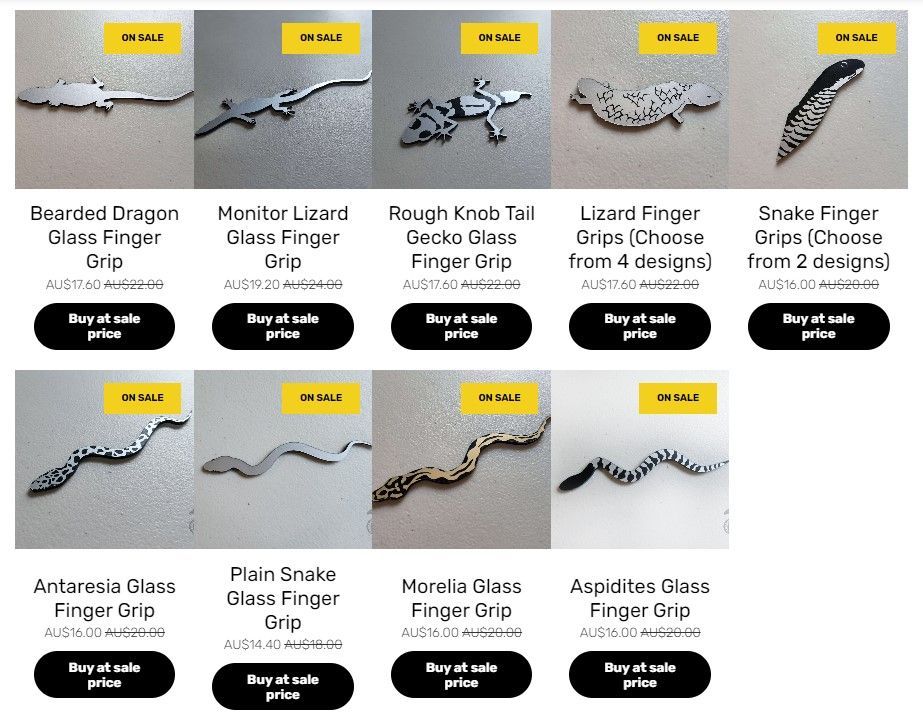How to Set Up a Reptile Heat Cord (AKA Tile Sandwich)
Have you ever wondered how to use a heat cord for your reptiles, or have you heard me refer to a tile sandwich? Here I’ll show you how to make one!
They’re super simple to use, and I’ve found them to be very safe and reliable.
It is important to note though that you will need to use a thermostat to control the heat cord and ‘sandwich’ to prevent it from overheating and hurting your snake, as with any other heat source.
I find tile sandwiches convenient to use beneath just one or two hatchy tubs (e.g. when I was a new keeper with just a few babies – racks with routed channels are easier for larger numbers), under glass enclosures, or inside timber enclosures. The example I’ll go through below is how I set up the tile sandwich within a timber enclosure, however if using it for glass, have the enclosure sitting on the top tile, with the thermostat probe still inside the enclosure to get an accurate temperature of the basking area.
List of Services
-
Step 1List Item 1
- Clean/wipe down the surface the sandwich is going into
- Apply a large blob of silicone into each corner of the underside of the tile (not right on the edges) and one in the center, like you would if using tile adhesive for a floor or wall tile.
- Firmly press the tile down in the desired location, applying pressure across the entire tile to ensure the silicone spreads, and to minimise the gap between the enclosure and the tile.
- Allow silicone to cure – I waited a week as I wasn’t in a rush and wanted to ensure it cured properly before sealing it in further.
Image: Pictured is my 45cm tile silicone into the corner of a 4x2x2ft black melamine enclosure, with the black heat cord entering the enclosure through a hole in the back left.
-
Step 2List Item 2
- Tear lots of approx. 1.5-2cm wide strips of cloth tape and stick them somewhere temporarily so you can grab them quickly- this makes the process quicker than tearing, sticking, tearing, sticking, if you know what I mean
- Start taping down the heat cord for the first line – I usually use 3 rows of tape regardless of whether it is a 30 or 45cm tile. Then zig-zag the heat cord to create evenly spaced rows and tape the rows down, as shown in the image.
Image: Three pieces of tape were placed to help stick the tile down using smaller pieces of tape, as the heat cord zig-zags back and forth.
-
Step 3List Item 3
- Continue taping down the heat cord, back and forth, as you started in step 2.
- Towards the end of the cord in this example, I actually spaced the cord further apart, so that it creates a slightly cooler region of tile, so the snake can decide where it’d prefer to sit to achieve it’s desired temperature.
Tip: Try to space your heat cord correctly so that it occupies the entire tile surface area- if you don’t, the next step won’t work well as the top tile will not sit flat
Image: Heat cord placement is complete.
-
Step 4List Item 4
- Place a second tile on top of the first so they line up directly over the top of each other
- Get your silicone and caulking gun ready, then silicone first around the top tile along the two edges where it meets the enclosure- I use my finger to run along the thin line of silicone to push it into the small gap, sealing it to prevent fluid or debris from getting in there.
- Remove the excess silicone- this is where the paper towel comes in handy- I Repeatedly wipe my finger along the edges to remove excess silicone, and wipe it onto the paper towel
- Next, silicone along the other two edges of the tile- you will need a fair bit more silicone here, as some of it will squish between the two tiles. Again, I then use my finger to spread it across the edges of the tiles and ensure there are no little gaps or pockets that stuff can get stuck into.
Image: This is the silicone I use, as it is safe to use in aquariums and enclosures.
-
Step 5
You can use a sharp blade to remove the excess super thin layer of silicone that spread out during the process above.
Image: I’ve sealed all around the edges of the tile sandwich. I haven’t yet removed the excess silicone
-
Step 6
- I use a small amount of silicone to keep the thermostat probe in place for the main basking area. It may not look great, but I find I don’t actually see it because I place the warm end hide on top.
- Allow everything to cure with good ventilation for a week before decking the enclosure out for your reptile!
Image: Siliconed thermostat




